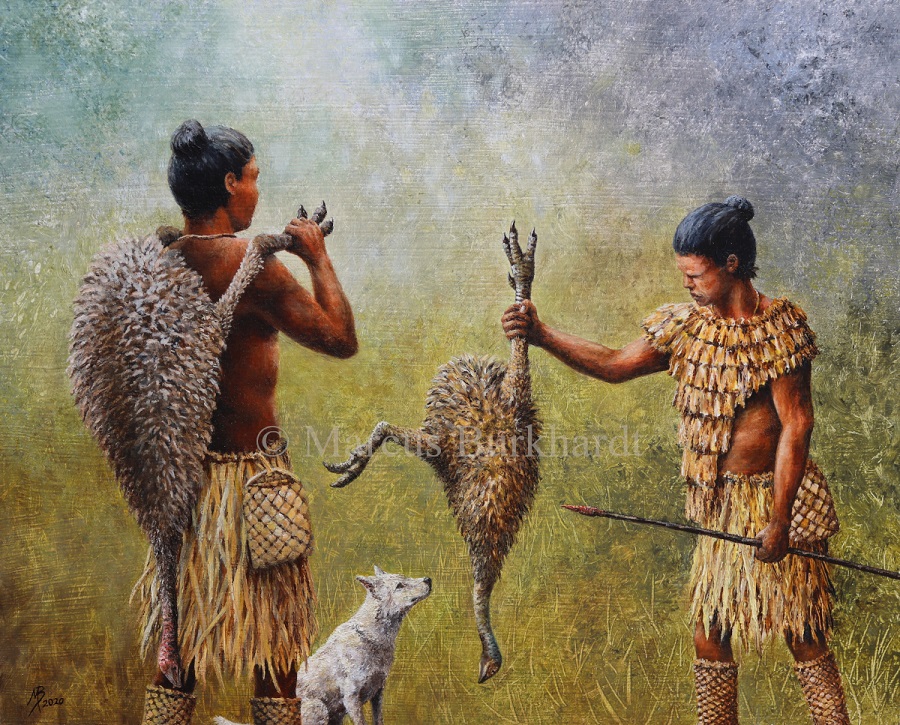
Acrylic and oil paint on panel, 2020
50 x 40 cm

Acrylic and oil paint on panel, 2020
50 x 40 cm
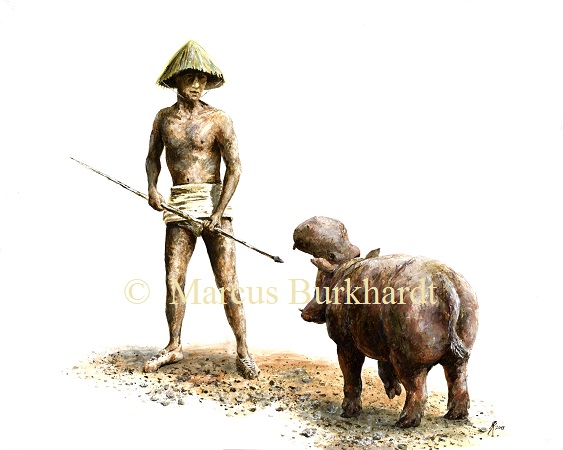
Cyprus in the Mesolithic: A man hunts a Cyprus dwarf hippopotamus (Hippopotamus minor). This was a relative to the modern hippo (Hippopotamus amphibius) and characterized by a special foot-anatomy which made it walking on just two toes per foot and was an adaption to a more terresric way of life. This specialized hippo became extinct very fast after the arrival of humans on prehistoric Cyprus.
Acrylic paint on paper, 2019
50 x 40 cm
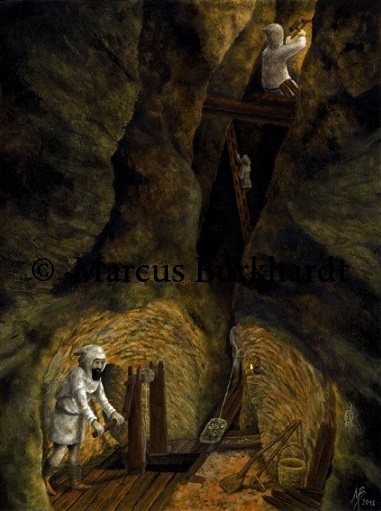
Medieval mine. In the foreground there is a pitman at the bobbin, on the right tools like shovel, bucket and hoe. Further backward a worker is transporting ore in a hutch. Above there is a pitman on a ladder and someone working with the “Gezähe” (hammer and chisel).
Oil paint on paper, 2018
32 x 24 cm
Client: Landesamt für Archäologie Sachsen (LfA)
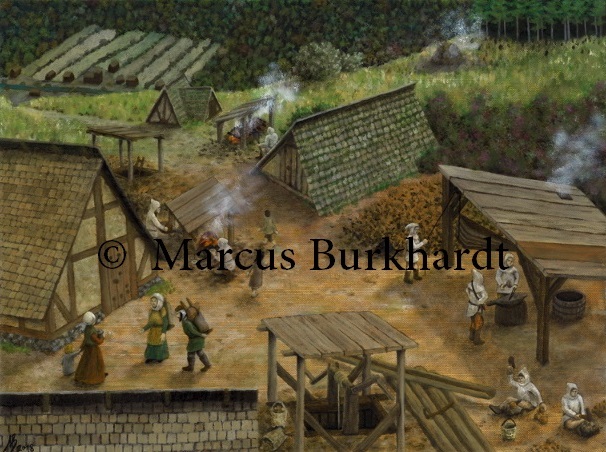
Medieval mining settlement. In the foreground there is a mine shaft with bobbin. Workers stamping the ore aside. Farther behind there are a forge, an assay furnace, an ore roasting furnace, the dwellings of the miners, a charcoal pit and a Waldhufendorf. The merchants in the foreground show that these villages were provided with aliment from outside and that they had no own food production.
Oil paint on paper, 2018
32 x 24 cm
Client: Landesamt für Archäologie Sachsen (LfA)
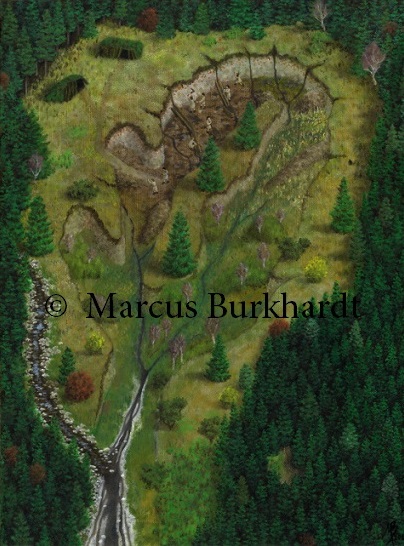
Placer terrain in the Bronze Age. In late autumn tin panning is practiced with timber channels and wooden boxes. Below older mining waste tips are overgrown with vegetation. Left above there are primitive dwellings of the diggers.
Oil paint on paper, 2018
40 x 30 cm
Client: Landesamt für Archäologie Sachsen (LfA)
Published in: Johann Friedrich Tolksdorf: Mittelalterlicher Bergbau und Umwelt im Erzgebirge. Eine interdisziplinäre Untersuchung (Mit Beiträgen von Mathias Bertuch, Christoph Herbig, Heide Hönig, Knut Kaiser, Anja Kaltofen, Petr Kočar, Sonja Matson, Libor Petr, Tobias Scharnweber, Frank Schröder und Matthias Schubert). ArchaeoMontan (4) (Dresden 2018).
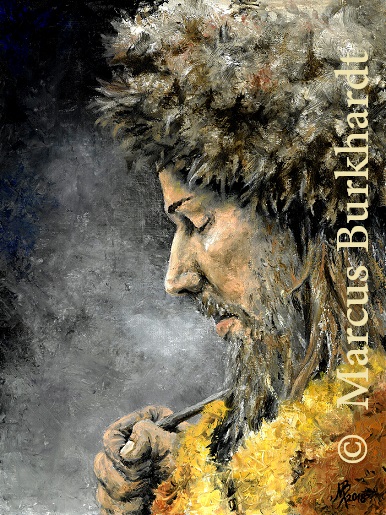
Ötzi
Oil paint on paper, 2018
32 x 24 cm
The picture originated during the symposium “Kunst am Berg”, Panoramarestaurant BergDiamant Fiss/Austria.
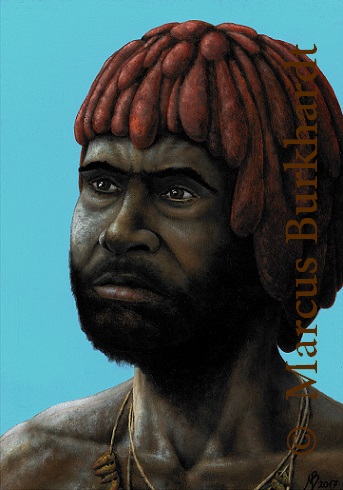
For research I used the following publication: Gisela Völger: Die Tasmanier: Versuch einer ethnographisch-historischen Rekonstruktion; Wiesbaden, Steiner,1972
29,5 x 21 cm
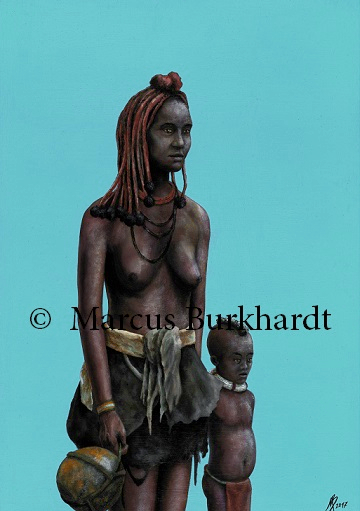
Himba woman with child and gourd
Oil paint on cardboard, 2017
42 x 29,5 cm


Buddhistical monk
Acrylic paint on paper, 2017
48 x 36 cm
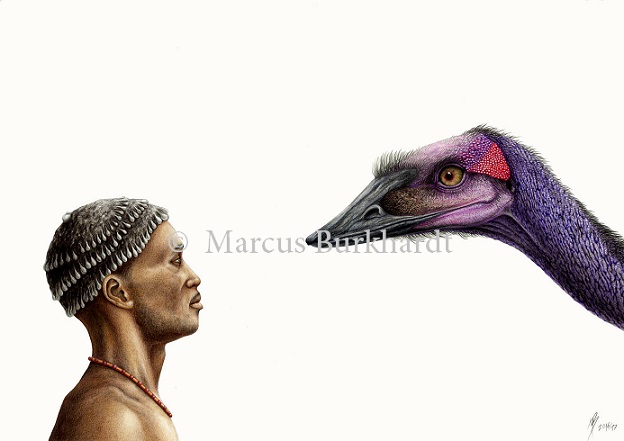
Encounter with Aepyornis maximus
A Madagasy man of the Bara type faces a bird which extinction is caused by his species: elephant birds, also known as vorompatras, belong to the biggest birds of Earth history and lived probably until the 17th century. Anyway this bird has an importance for the natives until today: the shells of the big eggs are collected and sold to tourists. The aborigine has a gusset hairstyle, which was still a distinctive feature between the different clans of Madagascar a hundred years ago. The hair gussets were often covered in a layer of wax.
Coloured pencil, 2016/17
59,5 x 42 cm
MoVo – Moderne Vogelbilder, 2017, Heineanum Halberstadt
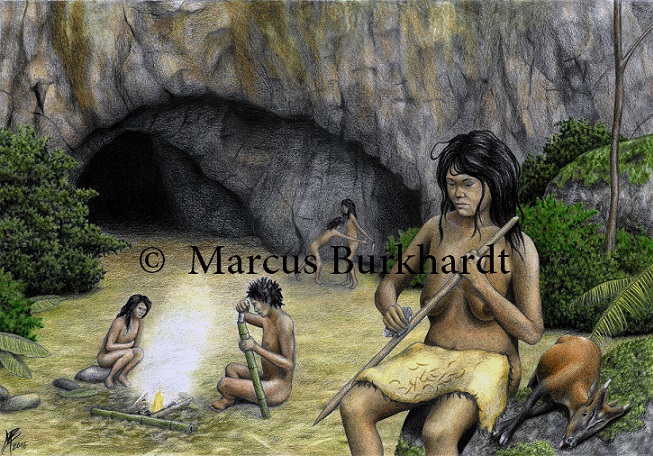
Stone Age in Vietnam: Hoabinhian or Hòa Bình culture
Coloured pencil, 2016
42 x 29,5 cm
Published in: I. Kraft, J. F. Tolksdorf, Archäologie | Vietnams Altsteinzeit als Bambuszeit?, Spektrum der Wissenschaft, October 2017, 70-77.
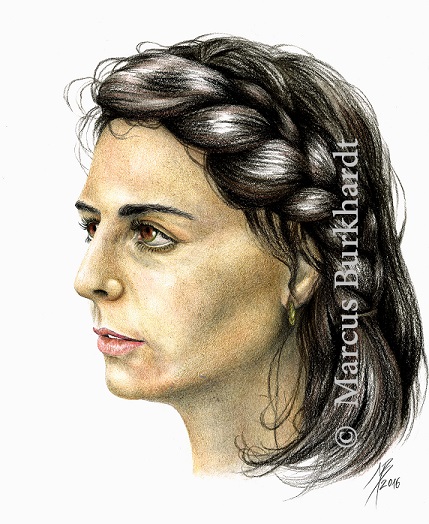
Portrait of a young Frenchwoman
Coloured pencil, 2016
29,5 x 21 cm
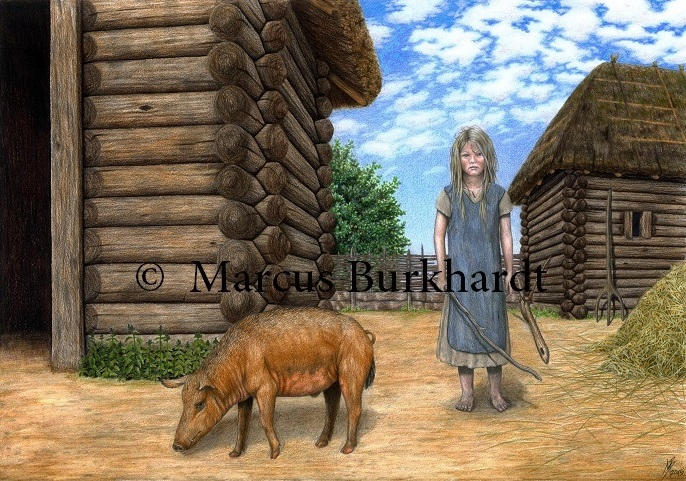
Slavonian village in the Early Middle Ages
Coloured pencil, 2015
59,5 x 42 cm
Sachsens Geschichte unterm Acker – Landwirte schützen Denkmale, 2015, Sächsischer Landtag www.archaeologie.sachsen.de/5822.htm
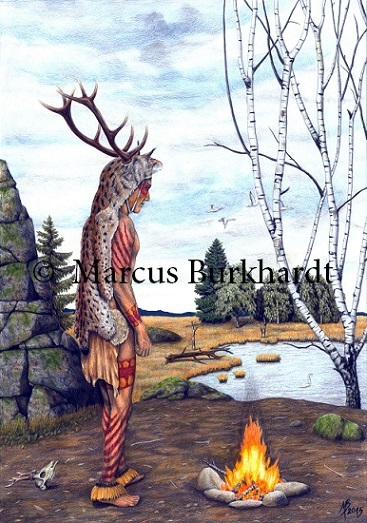
Mesolithic shaman with antler frontlet, lynx fur and bodypainting. Headdress like this was found in many parts of Europe. If they were used for cultic functions or drafted for going deerstalking is vague. Certainly there were similar masks by shamans in Siberia till the recent past.
Coloured pencil, 2015
59,5 x 42 cm
Sachsens Geschichte unterm Acker – Landwirte schützen Denkmale, 2015, Sächsischer Landtag www.archaeologie.sachsen.de/5822.htm
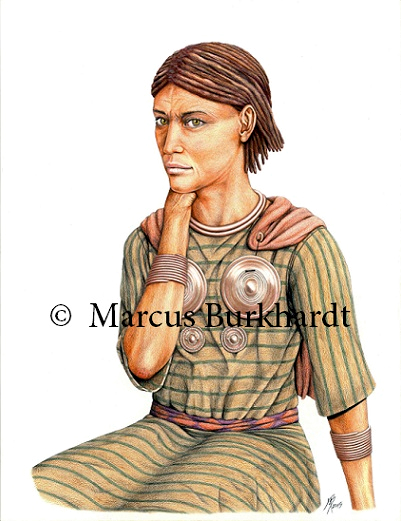
Woman of Bronze age, according to a hoard of Kyhna in Saxony (2100 BC), Únětice culture
Coloured pencil, 2015
65 x 50 cm
Sachsens Geschichte unterm Acker – Landwirte schützen Denkmale, 2015, Sächsischer Landtag www.archaeologie.sachsen.de/5822.htm
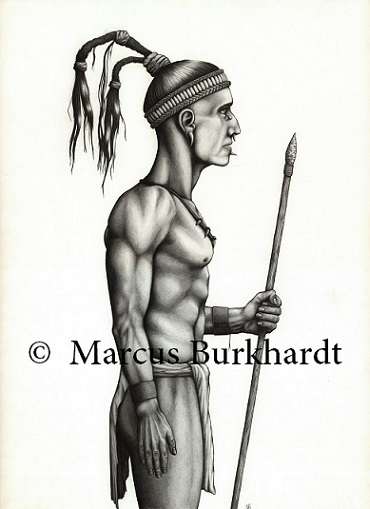
Maya warrior
Pencil, 2012
59,5 x 42 cm
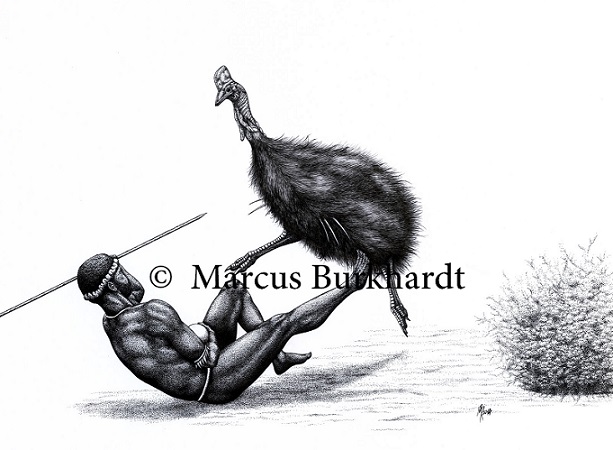
Papuan and offensive cassowary (Casuarius casuarius)
Ink, 2014
70 x 50 cm
MoVo – Moderne Vogelbilder, 2015, Heineanum Halberstadt